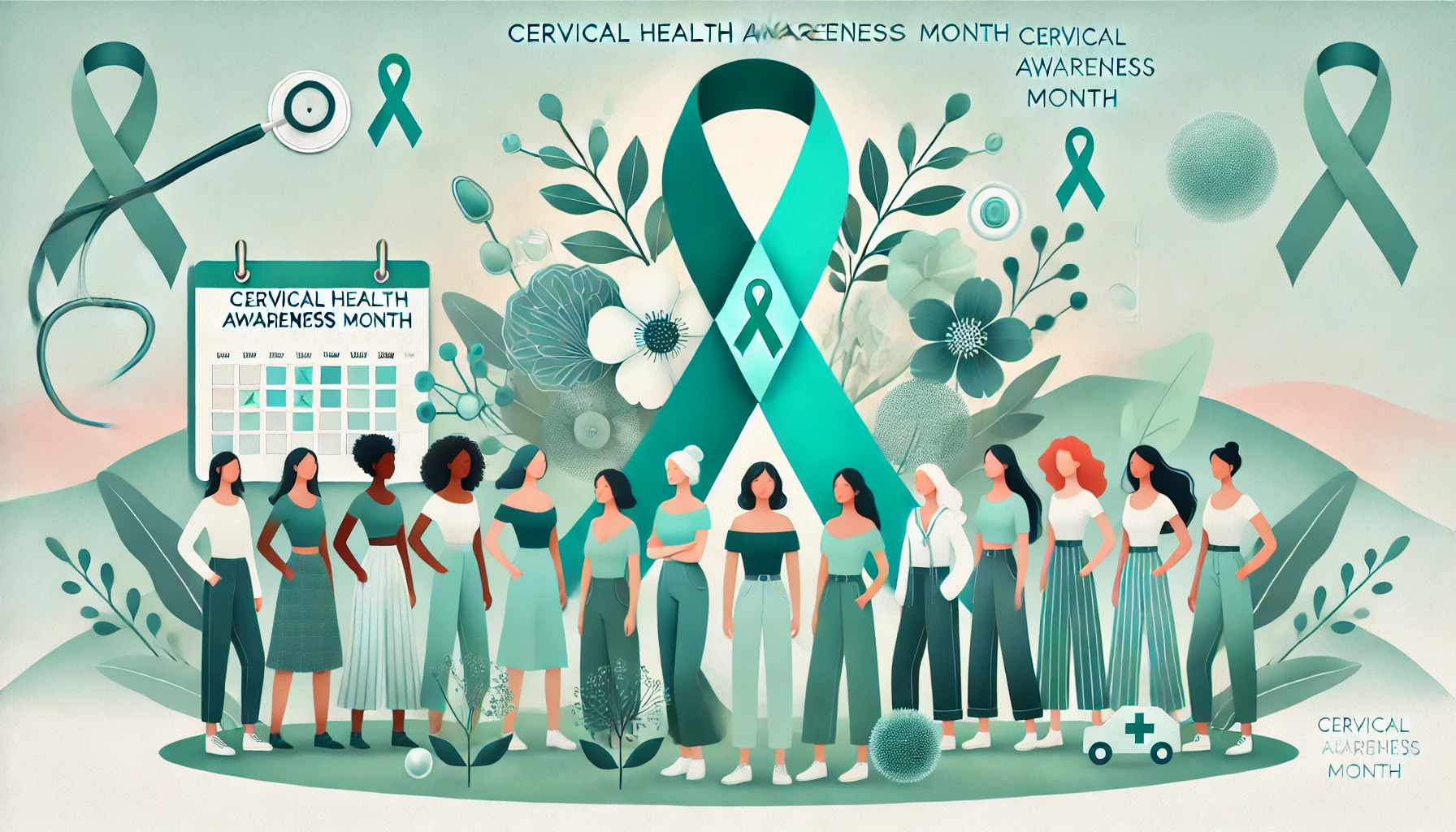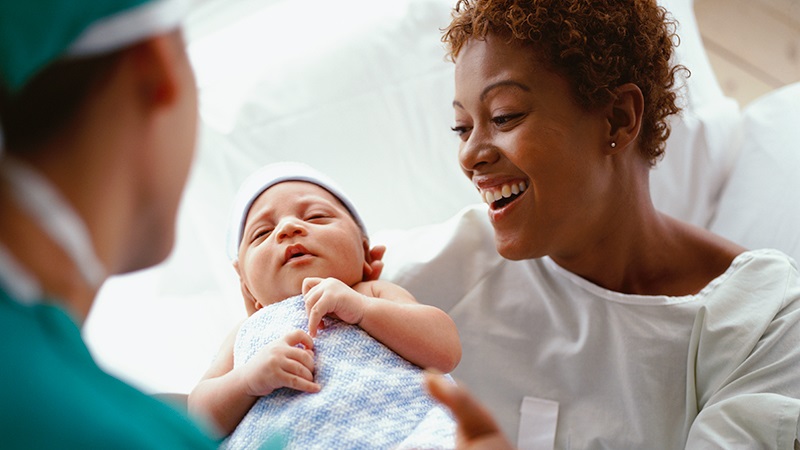January marks Cervical Health Awareness Month, a critical time to shed light on an issue that often goes unspoken but affects millions of women globally. Cervical health is a cornerstone of women’s wellness, yet many remain unaware of its importance until it’s too late. Let’s explore the significance of cervical health, the threats posed by cervical cancer, preventive measures, and why raising awareness can save countless lives.
The cervix, located at the lower end of the uterus, plays a crucial role in a woman’s reproductive system. Beyond childbirth, the cervix serves as a protective barrier, preventing infections from entering the uterus. However, the health of this vital organ is often compromised by human papillomavirus (HPV) infections, which can lead to cervical cancer if left untreated.
Cervical cancer is the fourth most common cancer among women worldwide. According to the World Health Organization (WHO), it claims over 300,000 lives annually, most of which are preventable. Despite advancements in medical science, late detection and limited awareness remain significant barriers to reducing these numbers.
Key Risk Factors
1. HPV Infection: The leading cause of cervical cancer, HPV, is a sexually transmitted infection. While most HPV infections resolve on their own, persistent high-risk strains can lead to cancer.
2. Smoking: Tobacco weakens the immune system, making it harder for the body to fight HPV infections.
3. Weakened Immunity: Conditions such as HIV/AIDS or prolonged use of immunosuppressive drugs can increase vulnerability.
4. Lack of Regular Screenings: Women who do not undergo routine Pap smears or HPV tests are at higher risk due to undetected abnormalities.
5. Multiple Sexual Partners: Increased exposure to HPV can result from having multiple partners or engaging with partners who have had multiple sexual relationships.
Cervical cancer often develops silently, showing no symptoms in its early stages. As the disease progresses, women may experience:
• Abnormal vaginal bleeding between periods, after intercourse, or post-menopause.
• Unusual vaginal discharge with a strong odour or bloodstains.
• Pain during sexual activity.
• Pelvic pain unrelated to menstruation.
These symptoms should never be ignored, as early detection dramatically improves survival rates.
Preventive Measures
1. Vaccination Against HPV: One of the most effective ways to prevent cervical cancer is through the HPV vaccine. Administered to both boys and girls, preferably before the onset of sexual activity, this vaccine offers protection against the most dangerous HPV strains.
2. Regular Screenings: Routine screenings, including Pap smears and HPV tests, are vital for early detection of precancerous changes. These tests should start around the age of 21 and continue as recommended by healthcare providers.
3. Safe Sexual Practices: Using barrier protection methods like condoms reduces the risk of HPV transmission. Limiting the number of sexual partners can also lower exposure risks.
4. Smoking Cessation: Quitting smoking not only benefits overall health but also reduces the risk of cervical cancer by strengthening the immune system.
5. Education and Awareness: Knowledge is power. Educating women and communities about cervical health can dispel myths, reduce stigma, and encourage proactive healthcare measures.
The WHO has launched a global strategy to eliminate cervical cancer as a public health issue. The plan focuses on achieving three critical goals by 2030:
1. 90% of Girls Vaccinated: Ensuring that 90% of girls are fully vaccinated against HPV by the age of 15.
2. 70% Screening Coverage: Encouraging 70% of women to undergo high-performance screenings at least twice by age 45.
3. 90% Treatment Access: Guaranteeing that 90% of women diagnosed with cervical disease receive appropriate treatment.
Cervical Health Awareness Month provides a platform to emphasize the importance of prevention, early detection, and treatment. It encourages individuals, organizations, and governments to work together to address the gaps in education and healthcare access.
Despite global initiatives, several challenges persist:
1. Lack of Awareness: In many parts of the world, women remain unaware of cervical cancer and its preventable nature.
2. Cultural Stigma: Discussions around reproductive health are often taboo, discouraging women from seeking care.
3. Healthcare Inequalities: Limited access to vaccines, screenings, and treatments disproportionately affects women in low-income countries.
4. Cost Barriers: The financial burden of vaccinations and screenings deters many women from prioritizing cervical health.
India bears a significant share of the global cervical cancer burden. Factors such as limited access to healthcare, socio-economic disparities, and lack of education exacerbate the issue.
Initiatives in India
• National Immunization Programs: Efforts to include HPV vaccines in routine immunization schedules are gaining momentum.
• Awareness Campaigns: NGOs and healthcare providers are working tirelessly to educate women about the importance of screenings and vaccinations.
• Mobile Clinics: Bringing healthcare services to rural areas ensures that women in underserved regions receive necessary screenings and treatments.
Cervical Health Awareness Month is an opportunity for everyone to contribute to the cause. Here’s how you can make a difference:
1. Get Screened: Regular Pap smears and HPV tests can save lives. Schedule your screening today and encourage others to do the same.
2. Educate Yourself and Others: Share information about cervical health with your friends, family, and community. Knowledge is a powerful tool for change.
3. Advocate for Vaccination: Ensure that eligible individuals receive the HPV vaccine. Talk to schools, community leaders, and healthcare providers about its importance.
4. Support Awareness Campaigns: Volunteer, donate, or participate in events that promote cervical health awareness.
5. Challenge Stigma: Create safe spaces for open conversations about reproductive health. Breaking the silence can lead to greater acceptance and action.
Imagine a world where no woman has to suffer from cervical cancer, a world where every girl receives the HPV vaccine, every woman has access to regular screenings, and no one is denied treatment due to financial or social barriers.
This vision is achievable if we unite to prioritize cervical health. Cervical Health Awareness Month is a reminder that small actions, when multiplied across communities, can lead to monumental change.
Cervical cancer is preventable, treatable, and, in many cases, curable. Yet, it continues to claim lives because of ignorance, stigma, and systemic inequalities. Cervical Health Awareness Month urges us to break the silence, spread awareness, and take proactive steps to protect ourselves and the women we love.
Let’s use this month as a catalyst for change. Together, we can ensure that every woman, regardless of her background or circumstances, has the chance to lead a healthy and fulfilling life

 Cervical Health Awareness Month urges us to break the silence, spread awareness, and take proactive steps to protect ourselves and the women we love.
Cervical Health Awareness Month urges us to break the silence, spread awareness, and take proactive steps to protect ourselves and the women we love.










.jpeg)

.jpg)


.jpeg)
.jpeg)


.jpeg)
.jpg)





.jpeg)


